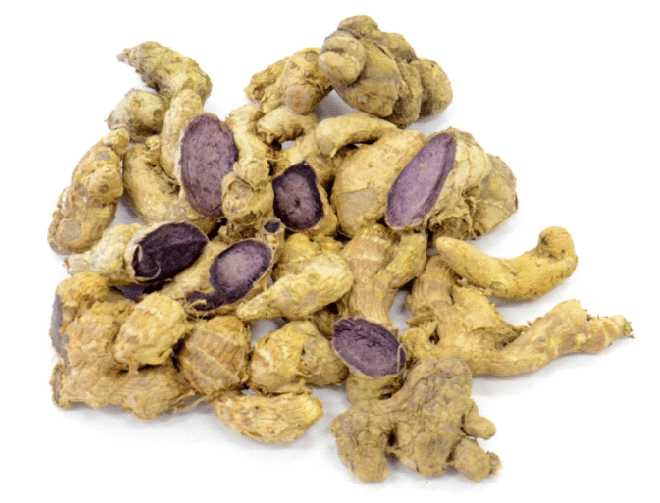Effect of Kaempferia Parviflora on Male Rat Sexual Activity and Its Toxicity
Abstract
Males have used Kaempferia parviflora Wall. Ex. Baker (Krachaidum) to increase their sex enhancement since antiquity. Themain aim is to investigate the effects of a K. parviflora ethanolic extract on the toxicity and sex behaviour of male rats. Three groups of rats received dosages of K. parviflora extract of 60, 120, 240 mg/kg body wt.2months, while the fourth set received distill water. With exception of the set that received maximum amount of extract, male rats in every setshowed significantly superior courtship behaviour within initial observation time than during the second and third 10-minute observation time combined. They displayed the same little courtship behaviour during the whole 30-minute activity, which was much less than the control group. There were no noticeable differences in mount and intromission frequency, mount and intromission latency amongwith treatment and control sets (IL). Blood parameters did not show significant variation in toxicologicalwork. Normal levels of aspartate aminotransferase, alanine aminotransferase, urea, and creatinine indicate that renal and liver function were not compromised at any of the dosages tested. Histology, however, revealed structural alterations inside the liver. The initial ten minutes of courting behaviour in rats was shown to be shortened by plant extracts at higher dose; hence, high and extended doses of this plant should be avoided in people at initial time.
References
Ang HH, Ngai TH. Aphrodisiac evaluation in noncopulator male rats after chronic administration of Eurycoma longifolia Jack. Fundam Clin Pharmacol2001;15:265-8.
Ang HH, Ikeda S, Gan EK. Effects of Eurycoma longifolia Jack on sexual qualities in middle aged male rats. Phytomedicine 2003;10:590-3.
Carro-Juarez M, Cervantes E, Cervantes-Mendez M, Rodriguez-Manzo G. Aphrodisiac properties of Montanoa tomentosa aqueous crude extract in male rats. PharmacolBiochemBehav2004;78:129- 34.
Cicero AF, Bandieri E, Arletti R. Lepidium meyeniiWalp. improves sexual behaviour in male rats independently from its action on spontaneous locomotor activity. J Ethnopharmacol2001;75:225- 9.
Chomchalow N, Bansiddhi J, MacBaine, C. Amazing Thai medicinal plants. Bangkok: Horticultural Research Institute (HRI), Department of Agriculture and Horticultural Science Society of Thailand (HSST), 2003.
Churdboonchart V. Thai vegetables; food and drug. Bangkok: Amarin Printing, 2000 (in Thai). Fawcett DW. Bloom and Fawcett: a textbook of histology. 12th ed. New York: Chapman & Hall, 1994.
Gridley MF. Manual of histologic and special staining technics. 2nd ed. New York: McGraw-Hill, 1960.
Jitjaingam A, KaKaew A, Saenphet K, Seanphet S, Aritajat S. [Abstract]. The 31th Congress on Science and Technology of Thailand, 2005:85.
Khan Riyazul Hasan and Saxena. DeepshikhaHemotological parameters of animal behaviour in aged male albino rats Journal of Cardiovascular Diseases Research. 2021;12 (1): 219-223.
Knobil E, Neill JD. The physiology of reproduction. Vol. 2. New York: Raven Press, 1998.
Marcondes FK, Blanchi FJ, Tanno AP. Determination of the estrous cycle phases of rats: some helpful considerations. Braz J Biol2002;62:609-14.
Niho N, et al, Subchronic toxicity study of gallic acid by oral administration in F344 rats. Food Chem Toxicol2001;39:1063-70.
Norris DO. Verterateendrocrinology. 3rd ed. London: Academic Press, 1997. Prophet EB, Mills B, Arrington JB, Sobin LH. Laboratory methods in histotechnology. Washington: American Registry of Pathology, 1992.
Sanchanta P, Saenphet K, Saenphet S, Aritajat S, Wongsawad S. Toxicological stuy of squeous and ethanolic extracts from Pueraria mirifiraciry Airy Shaw Suvatabadhu on male rates. Acta Hort Proc WOCMAP III 2005;5:165-71.
Sharp PE, La Regina MC. The laboratory rat. New York: CRC Press, 1998. Wutythamawech W. Encyclopedia of Thai herbs I. Bangkok: Phet 69 Printing, 2000 (in Thai).
Yenjai C, Prasanphen K, Daodee S, Wongpanich V, Kittakoop P. Bioactive flavonoids from Kaempferia parviflora. Fitoterapia2004;75:89-92.







